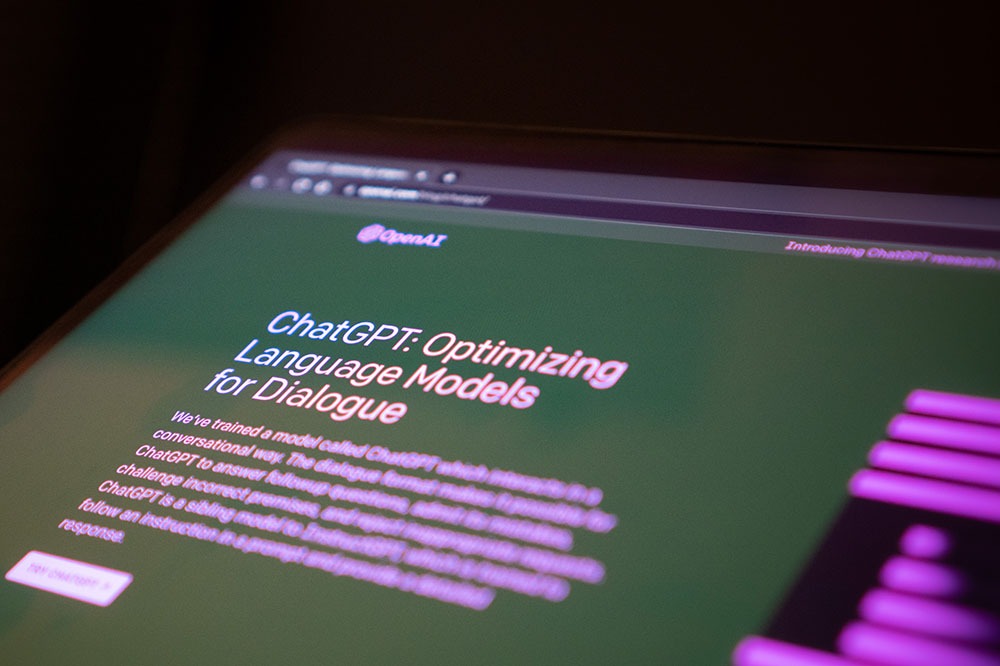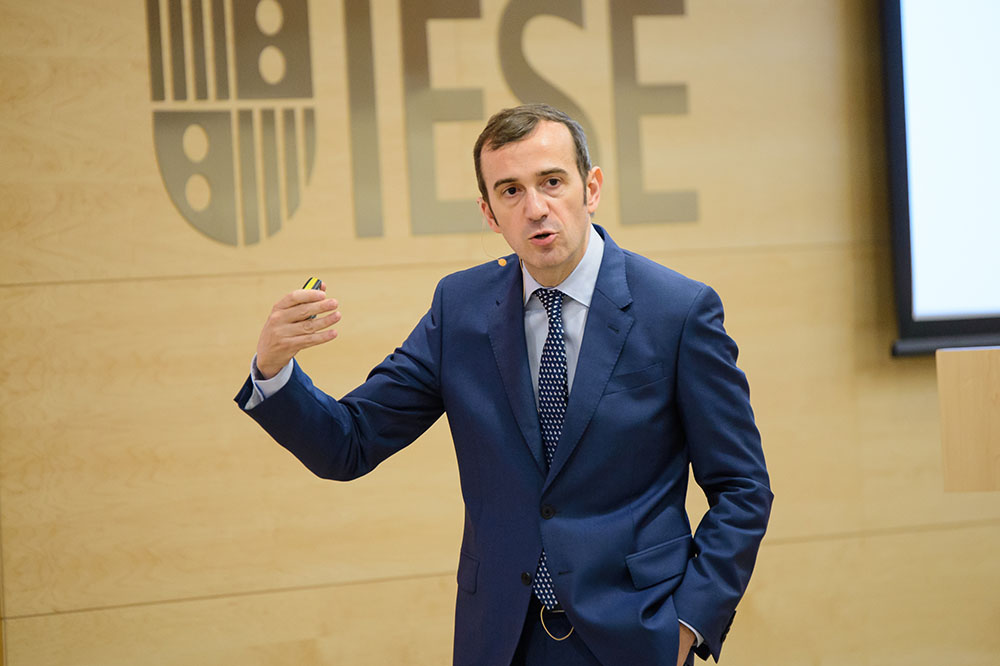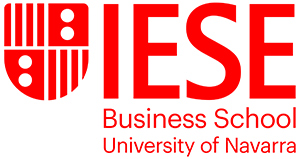Without a doubt, one of the key trends for the future of companies, and the world, is and will be artificial intelligence. Sets of systems and/or combinations of algorithms that are, increasingly, just as capable as humans when it comes to carrying out certain tasks. In the field of text creation, progress has been spectacular in recent years. Can a machine now give us advice? We wanted to do an experiment:
- We asked an AI for advice on an issue related to leadership: how to create a great team.
- Then, we asked an IESE professor who is an expert on this issue to assess this advice, reflecting on the reliability of this tool and how to use it.
Of all the different free text generation platforms that exist, one of the most well-known is ChatGPT. It was developed by the company OpenAI which is funded by Elon Musk, among others.
Read the article Artificial intelligence: 4 key questions every manager needs to ask themselves
Asking ChatGPT how to create successful teams
This is the instruction we gave it: Hello. I need a text on “How to create the best team” that is 800 characters long, in a clear, direct style, with no repetition of information, using bullet points. Having received the first answers, we asked it to finalize some stylistic issues such as verb tenses, and we ended up with these recommendations from ChatGPT. However, you won’t want to miss the analysis from the IESE professor, Javier Zamora, at the end of the article:

(Full text from ChatGPT)
The creation of an effective team is essential to the success of any project or company. A well-trained, motivated team can achieve great things, whereas a dysfunctional team may lead to difficulties and delays. The following are some recommendations for creating the best possible team:
- Identify the abilities and experience that the team needs. Before starting to look for suitable people, it is important to have a clear idea of the abilities and experience that the team needs. This will help ensure that you hire people who are suitable for the job.
- Look for people with complementary skills and diverse perspectives. A diversified team can provide a variety of approaches and solutions to problems, which can prove very valuable for the project.
- Establish objectives and clear goals for the team. Having clear objectives and specific goals will help keep the team focused and motivated.
- Promote an environment of trust and mutual respect. An environment of positive, collaborative work can help improve the team’s performance and increase team members’ satisfaction.
- Provide transparent, effective communication. Effective communication is essential to the success of any team. Ensure that all the members of the team have access to the information they need to complete their tasks.
- Establish clearly defined roles and responsibilities. Each member of the team must know exactly what is expected of them and what their responsibilities are. This will help to avoid confusion and collaboration problems.
- Ensure that the team has the tools and resources they need to complete their tasks. Providing the team with the tools and resources they need to do their work will help increase efficiency and performance.
- Establish a system of feedback in order to continually improve the team’s performance. Feedback is essential for improving the team’s performance. Establish a feedback system so that the team members can receive continuous feedback on their performance, and you can take measures to improve performance.
(End of text from ChatGPT)
Can we trust the advice from ChatGPT? We asked an expert
After receiving ChatGPT’s recommendations for how to create the best team, we sent them to the IESE professor of Information Technologies, Javier Zamora, to get his opinion on them. This is his perspective on whether or not we can trust its advice:

(Text from professor Javier Zamora)
The recommendations that ChatGPT has provided sound reasonable, but are they accurate? In order to understand the advantages and limitations of this tool, we need to understand that ChatGPT is using a type of automatic learning (Machine Learning) which is called generative AI. This is in contrast to discriminative AI systems, such as classifiers, that are typically used in Machine Learning.
Whilst, in discriminative systems, the AI tries to predict the class that a real piece of data belongs to (e.g. for an X-ray of a patient, determining whether or not a pathology is present), in generative systems, the AI generates new data that are similar to the real data that it has been trained with (e.g. given all of an author’s poems, generate a new poem in the style of this author). Meaning that, with generative systems, we can create data that seem to be real data. These systems, such as ChatGPT, have been trained with almost all the information that is available on the Internet.
The training process consists of calculating the values of hundreds of thousands of millions of parameters of a massive neural network, creating what is known as a Large Language Model (LLM). It is estimated that training the most recent version of ChatGPT (GPT-4) involved a computational cost of more than 100 million dollars. Once trained, the system is capable of generating a text, predicting it word by word, so that the resulting text will be as credible as possible, based on the training data.
Therefore, the advantage of these systems is that they have an infinite memory, as they have been trained with all the available information, and they are capable of generating texts that seem real. However, the main disadvantage of these systems is that they do not provide factual information, and the answers they provide can include what are known as “hallucinations”. This happens because the AI is not using any logic or reasoning in the content that it generates; it only predicts the next word of the text based on the data it has been trained with.
Starting with the recommendations that ChatGPT provided, I asked ChatGPT itself to identify the weaknesses of its own recommendation for me. It listed different issues, and concluded with the following paragraph:
“In summary, although the recommendations presented are useful, they could be improved with greater clarity and detail in some aspects. The formation of effective teams is a complex task, and careful attention must be paid to multiple factors in order to be successful.”
In addition, when I asked it why it hadn’t given us better recommendations in the first place, given that it knew that the first recommendations could be improved, it answered as follows:
“It is important to bear in mind that my ability to generate responses is based on the data and language patterns that have I have been trained with, and that my understanding of issues and concepts is limited to what I have learned from my database. As a result, it is always important to critically assess the information provided and seek additional sources and experts in the field in order to obtain a more complete, accurate understanding.”
Therefore, this type of tool is useful for creating first drafts, acting as a “co-pilot” for a human being who is in the driving seat, to avoid presenting certain “hallucinations” that may be generated as if they were true. For example, when I asked ChatGPT to recommend an article by an IESE professor on the creation of successful teams, it recommended this article by Prof. Canela, which appeared in IESE Insight in 2013, entitled “Team Building and Its Influence on the Performance of Corporate Teams”. All very credible, aside from the minor detail that the title of that article is fictitious, as is its attribution.
(End of the text from Professor Javier Zamora)
IESE Business School has an Initiative on Artificial Intelligence and the Future of Management, a multi-disciplinary project that analyzes the impact of AI on the management of companies, and which contributes to training executives in how to use AI in their companies in an ethical, socially responsible manner. IESE also offers a program for executives on artificial intelligence, to understand how to lead the transformation of your company through AI. And discover the Certificate in AI & Digital Transformation.

















